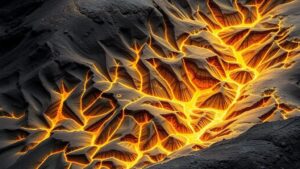Using Advanced Classifiers to Improve Gold Recovery Efficiency
Using Advanced Classifiers to Improve Gold Recovery Efficiency
The process of gold recovery has undergone significant changes over the years, especially with the advent of advanced classifiers and machine learning techniques. This article explores how these technologies enhance gold recovery efficiency, providing detailed insights into methodologies, benefits, and real-world applications.
Understanding Advanced Classifiers
Advanced classifiers are machine learning algorithms that analyze and predict outcomes based on complex data patterns. In the context of gold recovery, these classifiers can be used to optimize the separation process between gold and other materials. Traditional methods often rely on physical properties like size and weight, but advanced classifiers can incorporate a wider range of data, including chemical composition and texture.
Types of Advanced Classifiers
- Support Vector Machines (SVM): SVMs are powerful for classification tasks. They work by finding the optimal hyperplane that separates different classes in high-dimensional space. In gold recovery, SVM can classify ore samples based on various features.
- Random Forests: This ensemble method creates a multitude of decision trees and merges their results. It is useful in handling large datasets with significant parameter variation, thereby improving recovery rates by prioritizing optimal processing routes.
- Neural Networks: Inspired by biological neural networks, these models can learn complex relationships. They are particularly effective for predicting the concentration of gold based on multiple input features collected through sensors.
Benefits of Using Advanced Classifiers
Utilizing advanced classifiers in gold recovery presents several key benefits:
- Increased Accuracy: Enhanced predictive capabilities lead to more precise separation processes, reducing the amount of gold lost during recovery.
- Efficiency in Processing: By correctly classifying and sorting materials, mills can operate at optimized speeds, reducing energy consumption and costs.
- Real-time Analysis: With continuous data input, classifiers can immediately adapt to changing conditions, improving operational flexibility.
Case Studies in Gold Recovery
Several mining operations have successfully integrated advanced classifiers into their gold recovery processes:
- Xtract Technologies: This company implemented machine learning algorithms which improved gold recovery by up to 15% at their mining site in South Africa. The approach involved using an SVM classifier to optimize the sorting of ore based on mineral content.
- Barrick Gold: Barrick employed a Random Forest model to analyze operational data from their processing plants, leading to an increase in recovery rates. By finding correlations in historical data, they fine-tuned their milling processes, resulting in a notable cost reduction.
Real-world Applications
The practical applications of advanced classifiers extend beyond mere theoretical frameworks. For example, sensor data from grinding mills can be fed into neural networks that continuously analyze particle size distribution, allowing operations to dynamically adjust settings for maximum gold yield.
Challenges and Considerations
While the advantages of advanced classifiers are clear, there are challenges to consider:
- Data Quality: The success of any machine learning model depends heavily on the quality and quantity of data. Inaccurate data can lead to poor predictions and operational inefficiencies.
- Useation Costs: The initial setup for advanced classifiers involves significant investment in technology and training, which may deter smaller operations.
- Resistance to Change: Traditional mining practices can be deeply entrenched, posing a cultural barrier to the adoption of new technologies.
Actionable Takeaways
To leverage the benefits of advanced classifiers in gold recovery, stakeholders should consider the following steps:
- Invest in quality data collection methods to ensure that accurate input is available for machine learning models.
- Start with pilot programs that assess the effectiveness of classifiers in smaller operations.
- Encourage an organizational culture that values innovation and is open to integrating new technologies into existing processes.
Conclusion
Advanced classifiers represent a transformative approach to improving gold recovery efficiency. By embracing machine learning and its capabilities, mining operations can achieve higher accuracy, reduced costs, and increased overall productivity. As the industry continues to evolve, the integration of these advanced technologies will be essential for sustainable growth and operational effectiveness.

